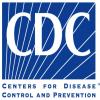You are here
Evaluation of the Benefits and Risks of Introducing Ebola Community Care Centers, Sierra Leone
Primary tabs
CDC Dec. 23, 2014
Abstract of study on usefulness of Ebola community care centers to supplement larger Ebola treatment centers.
In some parts of western Africa, Ebola treatment centers (ETCs) have reached capacity. Unless capacity is rapidly scaled up, the chance to avoid a generalized Ebola epidemic will soon diminish. The World Health Organization and partners are considering additional Ebola patient care options, including community care centers (CCCs), small, lightly staffed units that could be used to isolate patients outside the home and get them into care sooner than otherwise possible.
Using a transmission model, we evaluated the benefits and risks of introducing CCCs into Sierra Leone’s Western Area, where most ETCs are at capacity. We found that use of CCCs could lead to a decline in cases, even if virus transmission occurs between CCC patients and the community. However, to prevent CCC amplification of the epidemic, the risk of Ebola virus–negative persons being exposed to virus within CCCs would have to be offset by a reduction in community transmission resulting from CCC use.
... in Sierra Leone, ETCs have reached capacity, and patients are being turned away (1). The reproduction number (defined as the average number of secondary cases generated by a typical infectious person) has been >1 in Sierra Leone, leading to growth in the number of cases reported each week (2–4). As a result, there is an urgent need to rapidly scale up treatment and isolation facilities. Delays in implementation will result in falling further behind the epidemic curve and in an even greater need for patient care facilities.
Read complete CDC report.




Recent Comments